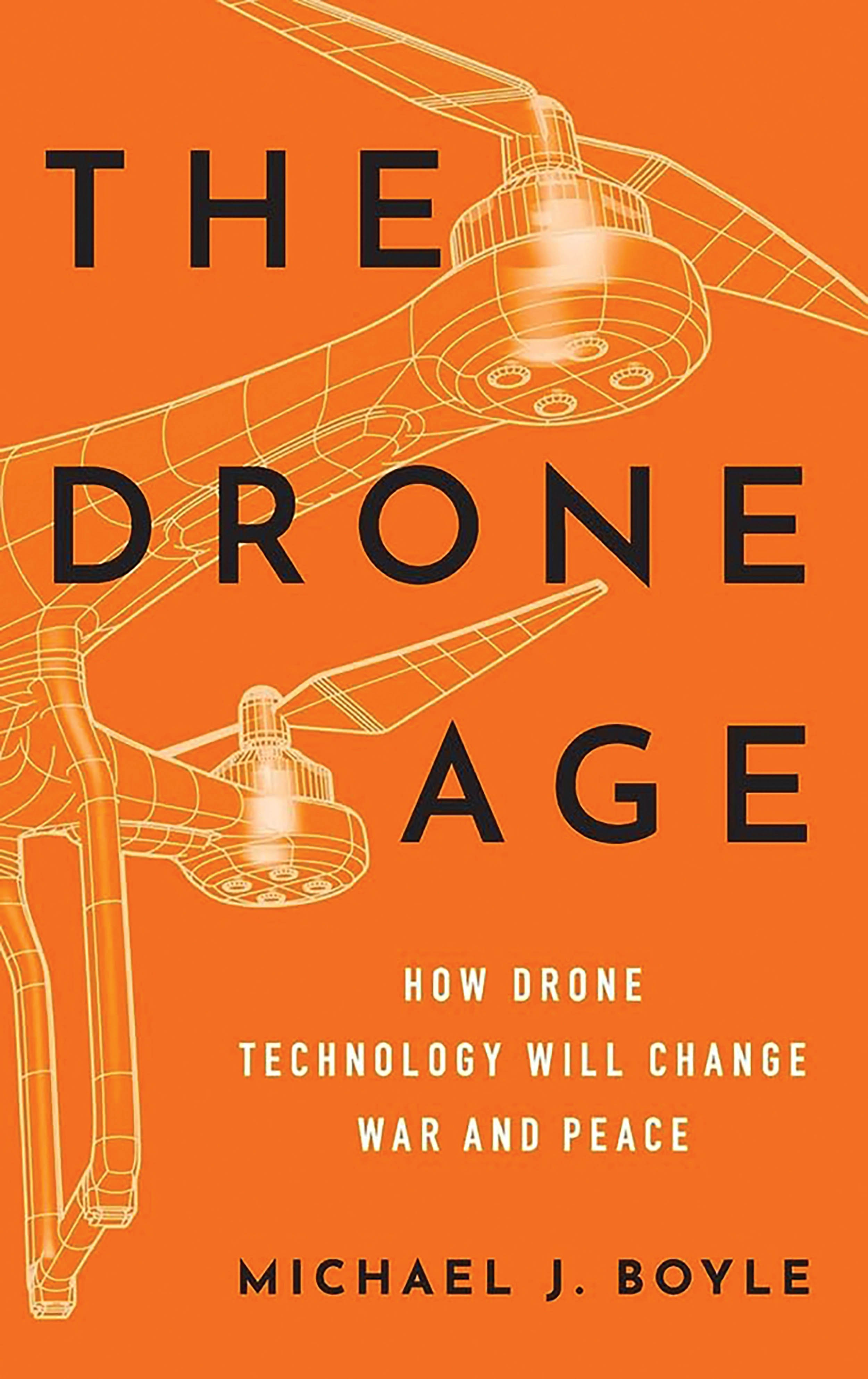Download PDF
John W. Sutherlin, Ph.D., is the Chief Innovation and Research Officer at the University of Louisiana Monroe, which developed one of the first drone programs more than a decade ago..

The Drone Age: How Drone Technology Will Change War and Peace
By Michael J. Boyle
New York: Oxford University Press, 2020
387 pp. $19.56
ISBN: 9780190635862
Reviewed by John W. Sutherlin
Timely, relevant, and provocative, Michael J. Boyle’s The Drone Age makes the point better than any other on the subject: the sky is full of drones, and policymakers, especially those in defense agencies, need to come to terms with this technology.
Boyle is an associate professor of political science at La Salle University (Philadelphia) and a senior fellow with the Foreign Policy Research Institute. The Drone Age shows remarkable growth, maturity, and analytical abilities over his earlier effort Violence After War: Explaining Instability in Post-Conflict States (John Hopkins University Press, 2014). Both works demonstrate Boyle’s capacity to conduct interesting and thorough research while posing critical questions. The Drone Age is buttressed by almost a decade of published articles by Boyle in numerous journals addressing drone technology and the effectiveness of drones in war, terrorism, and humanitarian causes.
Woven throughout all of Boyle’s research on drones (the book includes almost 70 pages of notes) is the troublesome issue of ethics. It is not the author’s intent to resolve all moral issues, but rather to level the playing field of knowledge about drones so that policymakers and citizens alike can begin to bridge the chasm that seems to exist between technology and ethics. Boyle notes that fear of the unknown is often what paralyzes sound judgment. And with drones, fear abounds.
Hidden behind euphemisms like “redistributing risks,” “find, fix, and finish,” and “precision warfare” is the real-world deployment of killing machines operated remotely. The metaphor of “wargames” where joysticks have replaced triggers is never more precise. The term drone (technically an unmanned aerial vehicle, or UAV) evolved from a Northrup company invention based on the Royal Navy (UK) aircraft Queen Bee. Boyle provides an exemplary synopsis of the early days of the Wright Brothers to World War I and the interwar period when airplane potential was realized in bombing raids in all theaters of conflict.
He also provides the reader with context along the way, describing many drone technology firsts—for example, the first U.S. President to observe a drone, and the first time a U.S. citizen was targeted and killed by a drone outside of a war zone. Boyle also displays his vast knowledge of drone characteristics, models (such as the Phantom, Predator, Dark Star, and Divine Eagle), and capabilities. For anyone approaching this subject for the first time, this book is a great place to advance your comprehension of an extremely complex subject.
However, Boyle’s real contribution is his documentation of the progression from fascination to interest to acceptance to deployment of drones by the Air Force. This movement from novelty to lethality paved the way for military advisors to press Presidents to use drone technology. With limited congressional oversight, Presidents have been able to adjust the criteria for drone deployment in war or security matters from certainty to reasonable certainty. And drones further push the limits of privacy protection and data security when used in a policing context.
Perhaps one of the most important conclusions Boyle reaches is that drone technology cannot be blamed for increased violence or political instability. Rather, any new technology, including the use of artificial intelligence, can lead conflict to expand beyond initial justification for the use of drones. “Goal displacement” or “mission creep” seem to address the subtitle of the book, How Drone Technology Will Change War and Peace. Simply stated, drone technology is already changing war and peace. Casualties and collateral damage by those using drones may be limited, but that does not translate into a more peaceful world with a cessation of all hostilities. In fact, there may not be the same level of deterrence or moral handwringing as found during the Cold War regarding the development or use of nuclear weapons. According to Boyle, the need for some “clear legal and moral understanding” regarding drone technology, development, sale, and use is serious, and a lack of such understanding could “exaggerate the hubris of governments.” Coupled with the erosion of democracies worldwide, drone technology could have a cumulative negative impact on peace.
For those in any branch of the joint force, The Drone Age is a useful look at this multifaceted issue. The question remains: Will humans abdicate their moral responsibilities to unmanned flying machines? I guess we will see sooner than our moral decisionmaking can adjust. Technology seems to be always one step ahead of our ethics. JFQ